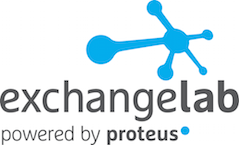
Publishings
Program Areas
-
Robert Kyncl, the Chief Business Officer at YouTube, gave a keynote speech at CES 2016 (link is external) yesterday. Video marketers will want to make the time to watch all 57 minutes and 36 seconds of “Robert Kyncl, YouTube - Keynote 2016,” which was uploaded to the CES channel (link is external) today. Now, I realize that urging you to carve almost an hour out of your busy schedule seems like I’m asking you to make an enormous investment of time. But, trust me, Kyncl delivers the kind of strategic insights, critical data, tactical advice, and latest trends in the digital video marketing business that will give you a colossal return on that investment. After watching the video above, I asked Michelle Slavich, the head of Entertainment Communications at YouTube, for a transcript of Kyncl’s keynote. You will find it below. Now, I haven’t made that kind of request since I managed to get a copy of John Green’s keynote address (link is external) at VidCon 2015. So, I thought Kyncil’s keynote contains insightful analysis and interesting information that is beyond obvious. Nevertheless, after watching Kyncl’s keynote, you may also want to read the transcript below – because you’ll want to read them again and again as you chart a course from now to 2020. The only things missing in the transcript below are the unscripted remarks of Scooter Braun, founder of SB Projects, Nick Woodman, CEO of GoPro, and Chris Milk, CEO of Vrse, who Kyncl invited on stage to share their stories. "Thank you. It’s an honor to be back delivering a keynote here at CES, especially just one day after my former boss Reed Hastings. The last time I was here was in 2012. I had been at YouTube just a little over a year. And I really wanted to impress all of you, so I did what a lot of executives do at CES: I made a few predictions. I said that by 2020, 90 percent of all internet traffic was going to be video traffic. I talked about Michelle Phan, a young girl who had a makeup channel on YouTube that was drawing a ton of viewers and told you that she would be a major success. And I also said that by 2020, 75 percent of all video people watched in the US was going to be transmitted through the internet. So how did I do? First, internet traffic. Cisco predicts that video will actually reach around 90 percent of global internet traffic by 2019—so a full year ahead of schedule." --- For the full transcript of Kyncl’s keynote, visit http://bit.ly/1ZkNgQr (link is external)
-
Every day, TapFusion enables brands and agencies to reach billions of consumers with scalable, influencer-driven content. TapFusion is our proprietary SaaS platform that automates the process of identifying, distributing and measuring high value influencer marketing campaigns. TapFusion is our proprietary SaaS platform that automates the process of identifying, distributing and measuring high value influencer marketing campaigns. Influencer Recruiment & Enrollement Influencer Our opt-in marketplace grants you instant access to thousands of registered, vetted, experienced influencers, waiting to work with you, and acceptance rates of over 80%. ---- For a demo, visit http://bit.ly/1ZX5LfW (link is external)
-
The AddThis Audience Intelligence (Ai) platform combines big data, machine learning and deep ecosystem connections into tools that help you stay ahead. Our Products Are Built to Help You Optimize Your Marketing Outcomes: DISCOVER See inside custom audiences to reveal content engagement habits, geographic distinctions and brand adjacencies. ACTIVATE Find your most relevant audiences – quickly, and at scale. ENGAGE Deepen audience relationships with relevant calls to action on your own site. CONVERT Connect with your audience by sharing multimedia content you know they’ll care about. It All Starts with Extraordinary Data With 15 million sites in our ever-expanding data co-op, AddThis has unparalleled insight into the interests, intent and activity of over 1.9 billion uniques on the open web. No other entity can match the reach or depth of the first party permissioned data ingested into Ai every day, which means only AddThis can provide you with a truly current and holistic view into what your audiences actually care about. Built on Open Source Technology AddThis has written open-source code that others, such as Facebook and Twitter, now use to manage tremendous volumes of data. Our native technology includes innovations that take you through the data funnel; from processing billions of requests to storage and refinery to turning them into actionable insights. --- For more information, visit http://bit.ly/1mL2yS9 (link is external)
-
Rubicon Project offers real-time trading technology that automates the selling and buying of online advertisements. Rubicon Project’s automated advertising platform has surpassed Google in U.S. audience reach and is used by more than 500 of the world’s premium publishers to transact with over 100,000 ad brands globally. The company’s customers include eBay, TIME, ABC News, the Wall Street Journal, Tribune Company, Virgin Media, People, Universal and many other Fortune 500 companies.Rubicon Project performs 125 billion real-time auctions on their global transac- tion platform per day. That translates to about 4.0 petabytes of data that needs to be managed and analyzed.The ChallengeRubicon Project has relied on Hadoop for several years to store and analyze its data. However, the company’s business was growing rapidly and they needed to move to a fault-tolerant, mission-critical Hadoop production system. They needed high availability of services and jobs as well as data protection and disaster recov- ery capabilities.MapR Solution“We made a decision that Hadoop was going to be a critical piece of our day-to- day operations,” explains Jan Gelin, Rubicon Project’s VP of Engineering. “The problem with Hadoop was instability. We had to solve that problem. That’s where MapR comes in.”Rubicon Project chose the MapR Distribution including ApacheTM Hadoop® because of its enterprise features including high availability, data protection and recover- ability, disaster recovery and advanced monitoring features. “Redundancy and the availability of support are critical to our business,” says Gelin. ---For the full brief, download the attached document.
-
From our living rooms to the palm of our hands, screens big and small are giving us the flexibility to access content whenever and wherever we want. While this 24/7 access appeals to consumers, it has complicated campaign planning for advertisers. People can now see the same brand ad on different screens and at multiple times on any given day, whether they are on their mobile phone or watching their favorite TV show. Facebook wanted to understand the neural impact of preceding an ad exposure on one platform with an ad exposure on another platform (beyond what was attributable to increase in frequency). To study how people’s brains respond to TV ads after seeing that same ad on a mobile phone or on TV, we commissioned Neuro-Insight, a neuromarketing agency in the US. Methodology In September 2015, we measured the brain activity of 100 volunteer participants in the Neuro-Insight lab. During the 2-day test period, the participants, US adults ages 21–54, were assigned to 1 of 2 randomly selected groups. On Day 1, participants in one group watched a TV show with ads while participants in the other group browsed their own Facebook News Feed, which included test ads, on their mobile phone. On Day 2, participants in both groups watched the same brand ads during a new TV show. The brand ads shown during the test period represented a mix of verticals—including Automotive (2), CPG (1), Entertainment (1) and Tech/Telco (2)—and creative ad formats, including display and video. During the test, participants in each group wore EEG caps that measured responses correlated with real behavior from different parts of their brains. Neuro-Insight was able to measure their responses against neural metrics Approach/Withdrawal—the brain’s response to positive and negative emotion—and 3 key neural metrics that were the focus of our study: 1) Engagement, an indicator of how involved people are, 2) Emotional Intensity, a measure of the strength of emotion being experienced, and 3) Memory Encoding, the rate at which the brain is storing the current experience about the brand into long-term memory, where it can be recalled more than a few minutes later. This metric is recorded for the left brain as Memory Encoding detail and for the right brain as Memory Encoding global. Understanding the multiscreen impact Higher levels of brain activity were reported among participants who saw ads on Facebook first and then watched TV ads the next day. This result was consistent across all metrics measured. For Memory Encoding, we saw that participants first primed with the TV ad performed below the 50th percentile for Memory Encoding when they viewed the TV ad on Day 2. Meanwhile, participants first primed with the ad on Facebook scored above average on this metric. --- For the full article visit http://bit.ly/1M38ISe (link is external)
-
Solving Critical Problems for Both Advertisers and Marketers: Marketing / IT Problems: Acquisition, Retention, & Growth Poor Marketing Measurement Lack of Online/Offlne Integration, Channel Efficiency Solutions: Databases for cross channel residential and business marketing, third party data sourcing, modeling and analysis, campaign management and execution reporting Closed loop response attribution, cross channel dashboards, performance benchmarking, ROI & business case Online and offline customer data integration, real-time leverage of unified customer intelligence across channels Customer Insights Problems: Lack of Behavioral Insights Across Channels Optimize Customer LTV/Portfolio Managing the Customer Lifecycle Across Channel Solutions: Customer Data Integration, behavioral segmentation, purchase analysis, channel analysis, media consumption segmentation, reporting & dashboards Customer Data Integration, customer profitability and LTV, customer segmentation across lines of business and products, share and size of wallet Customer Data Integration, funnel analysis, conversion analysis, marketing strategy & program design recommendations for cross channel campaigns Sales Problems: Poor Sales Conversions/Close Rates Optimize Sales Coverage Against Best Opportunities Poor/Ineffective or Un-Prioritized Leads Solutions: Audience and business data integration and analysis, go-to-customer strategy design (share of wallet driven), funnel & conversion analysis Multi-dimensional sales coverage & mapping, sales performance and profitability, scenario planning New business leads, specialty data, modeled lead intelligence, connectivity between marketing database & SFA tools --- Full article available at http://bit.ly/1RNUtcm (link is external)
-
The Exchange Lab works with brands and agencies to plan and execute the most effective, strategic digital advertising campaigns. We provide a brand safe environment that adheres to all of the industry codes of conduct, offering campaign transparency and viewability metrics. But that’s not all. Every campaign is unique so we tailor our solutions to your marketing objectives. Build Brand Awareness: Focusing on audience first, we connect brands with their consumers in the right place, at the right time, across devices. Acquire New Customers: Prospecting allows you to identify those most likely to be potential customers, connect with them and then multiply this at scale. Re-Engage Audiences: We do this by continuing to build the relationship through content that clearly communicates your message. The customers that have shown an interest in your brand are more likely to engage, whether your campaign metrics are awareness or conversion based. Drive Performance: We adjust campaigns using real-time insights to inform budget weightings and spend allocations to ensure the best campaign performance possible. You don’t need to worry about how much you are putting against video, display or mobile specifically - we do that for you. The Programmatic Marketing Experts Devices: It’s all about priorities. Apparently our phones are more important to us than our wallets. It only takes the average person 54 minutes to report a stolen phone, but over 23 hours to report a stolen wallet. This is another reminder that the modern consumer is ‘always on.’ They shift seamlessly between devices to consume content whether it’s mobile, tablet, desktop or connected TV, so as a brand, you need to be able to reach them across devices. Channels: Content is king but context is emperor. We understand how important it is to deliver the right content through the right channel. Our team works tirelessly to provide you with one point of access to the entire ecosystem. --- For more, visit http://bit.ly/1YxBW8x (link is external)
-
Blog
New MMA White Paper Reveals How Top Brands in Retail, Restaurants and Non-Profits Are Using Location Data for More Effective Audience Targeting
No Longer Just a Tool for “In the Moment” Targeting, Marketers Are Now Leveraging Location Data to Build Rich Audience Segments Based on Actual Behaviors
New York – February 26, 2015 – Major brands are now using location data for purposes beyond targeting consumers at a particular moment in time. Marketers are leveraging location data to build much more comprehensive audience segments, which can be used to target consumers in a wide array of mobile campaign scenarios. This according to a new white paper produced by the Mobile Marketing Association (link is external) (MMA) on behalf of the MMA NA Location Committee Audience Working Group. Titled, “Using Location for Audience Targeting”, the paper reveals how user location and place data is evolving from a tool used primarily for “in the moment” targeting, to an essential component in the creation of accurate audience segments. While location data has already proven to be an invaluable resource in reaching customers at a particular place and time, marketers are quickly realizing its value in creating comprehensive audience segments for other mobile targeting purposes, particularly when paired with app, household, purchase and publisher data. “Given its unparalleled ability to tell marketers where consumers have been, where they are, and where they’re likely to return, location data has become an essential mobile marketing tool,” said Sheryl Daija, Chief Strategy Officer at the MMA. “Incorporating location data into the development of audience segments enables marketers to build a much more accurate and timely picture of the consumers they’re targeting, ultimately resulting in significantly better campaign ROI.” Traditionally, audiences have been derived from observed mobile usage, search and browsing history, or household data. While this static data can be helpful for reaching consumers at home, location-based data enables brands to reach potential customers at any time, as they move from place to place. Location data is also helpful in building more dynamic audiences because it takes into account the powerful context of where a user has been, something online and household data lacks. The paper explores how brands like Goodwill®, Pinkberry and Quiznos have successfully used location data to enhance audience segments and achieve impressive results using various campaign tactics. •Goodwill: Achieved a 43 percent increase in store visitation using audience targeting based on a combination of demographics and past visitation behaviors. •Pinkberry: Achieved a 100 percent lift in location-audience targeting tactics using audience targeting based on past visitation to health food stores, gyms and targeted fast food chains. •Quiznos: Achieved a 6 percent lift in sales using a custom campaign audience comprised of mobile users who frequented Quiznos and key competitors. “Location has evolved from a tool to target people where they are, to a platform of real-time insights about peoples’ true intent and actions. The power of location for targeting in the moment has been proven. Now, we can show how location has evolved beyond ‘marketing in the moment’, to enable marketers to create specific audience segments based on actual behaviors,” explained Monica Ho, SVP of Marketing at xAd Inc., MMA NA Board Member and Location Committee co-chair. To download the full white paper, “Using Location for Audience Targeting”, please click here (link is external). -
You are what you buy—Shopping data is a window into consumers’ lives. Their browsing patterns and purchases reveal their tastes, lifestyle, and aspirations. We track over 1 billion retail shopping points each month. This data is the foundation of our audience activation platform which enables brands to quickly connect with receptive audiences. Our unique combination of experience, data, and technology drives results. With over 15 years of retail experience, advanced data science and technology platforms, we translate our knowledge into effective marketing programs for our partners. Our proprietary retail data is the foundation of our campaigns. You’ll reach unique audiences since we don’t syndicate data to exchanges or outside media platforms. To ensure you effectively and efficiently reach your target audience we’ve developed an integrated platform that incorporates: A Demand Side Platform for media activation Contextual sites for relevancy & impact Proprietary retail data to power it all --- For more information, visit http://bit.ly/1ZcfazJ (link is external)
-
Blog
The Great Data Race
How commercial utilisation of personal data challenges privacy. Report, November 2015
A data race is taking place in the media and advertising industry. New technology and the ability to gather and analyse large volumes of data are changing the ways in which advertisers reach consumers. Consumers were once split into demographic groups, which were targeted via mass media. Today we are bought and sold one by one on global ad exchanges. This results in marketing which is highly targeted and which presupposes that the marketers have a thorough understanding of our habits, interests, tastes and network of contacts, in order to have the greatest impact. Google and Facebook dominate the market in automated ad trading because they have such an enormous amount of information about us. In Norway and Europe big media companies are currently building their own platforms for programmatic technology in an attempt to take on the global giants. The company who has the most data and the best technology is the winner of the data race. Every time we visit a website we don't engage with just one company, but many companies at the same time. As well as the publisher who owns the site, ad exchanges, demand side and supply side platforms, ad networks, data brokers and data management platforms are present using various tracking tools. Our report reveals that on average 43 different companies have a presence on Norwegian online newspapers and record what we do. Between 100 and 200 cookies were stored on our web browser when visiting the front page of six Norwegian newspapers. As a user, you may first notice the result of the cookies placed on your browser when the same ad starts following you around the Internet. The information that is gathered is used to build up comprehensive profiles about us. The more detailed the profiles are, the greater their market value. If we lose control of our own personal information, we also lose the ability to define who we are ourselves. No sector in the world knows more about us than the advertising industry. At the same time, we have very little insight into how these companies use the information they have about us. Privacy must not only give the individual protection against constant surveillance by the authorities, but also protect us against private companies monitoring everything we do. The individual is very small compared to a large corporation. Privacy legislation must redress some of this imbalance of power. Because the advertising industry is so lacking in transparency, however, individuals have limited opportunities to exercise their fundamental right to privacy in their dealings with it. The information asymmetry that characterises the market is a form of market failure. When consumers have no knowledge about what is going on, they cannot demand services that offer better privacy. The uneven distribution of information results in a competitive situation, which encourages the market players to use methods increasingly invasive of privacy. When we surf the Internet we want quick and easy access to the services we are searching for. We will almost automatically accept everything we are asked to accept. Making the processing of personal data subject to consent does not, then, have the intended effect. When we let individuals decide for themselves, the individual must stand alone against big and powerful players who are in reality able to dictate what the individual must consent to. The Norwegian Data Protection Authority will work to increase transparency and openness in the advertising market, ensure genuine freedom of choice for users and give the user more control over his or her own personal information. The most important recommendations and measures we propose in the report are as follows: Publishers (such as newspapers) must take responsibility for the third-party players they allow access to their pages. Companies engaged in the collection of personal data for profiling and marketing purposes must base the processing of the data on an active consent from the users Publishers must give all users access to their services, including those who do not consent to their information being collected. The privacy policies must be improved. They must be short and easy to follow, but must also include clear information about what data is collected, how it is processed and whether other players have access to the information. Publishers, media agencies and advertisers must join forces to produce guidelines that may contribute to greater openness and transparency about the nature of targeted advertising. --- Full report available at http://bit.ly/1Z89sz1 (link is external) -
Blog
Merkle: Get People Based with One Solution
The ONE integrated solution for people-based marketing
MerkleONE is Individual We apply our proprietary person-based identity-management technology to your customer data, combined with Merkle’s industry-leading third-party data. By assigning a unique identifier to each individual, you’re able to support integrated marketing decisions throughout the customer journey — across platforms and devices, even offline to online. The patterns that emerge inform a connected experience supported by the effective delivery of relevant content in the right context. MerkleONE is Integrated Our solutions enable individual-level platform decisions that are informed by data, introducing person-based insights into cookie-based ecosystems. We connect orchestration, insights, activation, and measurement toolsets, drawing on best-of-breed technologies from Google, Adobe, Facebook, Oracle, and more. Plus, MerkleONE’s service layer incorporates unique data-driven processes and artifacts that connect decisions along the marketing process. MerkleONE is Insightful Gleaned from our unique and extensive set of data sources, Merkle’s DataSource consumer database (link is external) offers hundreds of attributes that can be appended to your own customer data, allowing us to extract actionable people-based insights that drive addressable campaigns. Through robust segmentation and targeting, MerkleONE builds and executes dynamic campaigns that maximize ROI. Digital attribution, reporting, and analytics allow us to refine those key insights even further. --- Full article available at http://bit.ly/1jqTyA9 (link is external) -
Engaging consumers in the era of programmatic creative relies on data and automated technology. In this piece, Jamie Evans-Parker, CEO and founder of wayve, (pictured below) suggests how marketers can create the perfect mixture. Nearly a decade has passed since programmatic emerged onto the digital advertising scene, revolutionising targeting capability and efficiency by automating ad trading. Although initial uptake was slow, marketers are now readily embracing the technology – its portion of ad spend will exceed £2bn next year in the UK alone. Programmatic itself is showing signs of maturity, allowing marketers to reach increasingly specific audiences in real-time; while enabling publishers to maximise their digital assets and win bids from brands through indirect sales. But it’s crucial for marketers to ensure that the heavy focus on campaign scale does not come at the expense of creativity. Brands are beginning to realise that, while delivering a highly targeted campaign at an auction price is great, powerful and relevant creative is crucial to achieve the desired impact. A new era of digital advertising is dawning, where programmatic and creative combine to create far-reaching and captivating campaigns. So, how can marketers marry accurate data insight, automated technologies, and creativity to engage consumers? Joining forces to improve targeting As demand for a seamless, tailored and cross-screen online experience has increased; disparate tech forces have combined their strengths. The collision of martech and ad tech has brought together in-depth audience insight and sophisticated campaign execution, enabling marketers to achieve a new level of audience segmentation and precise targeting. Creative messages can be tailored to suit niche audiences, while lookalike audiences can be targeted using data collected from previous consumer interactions. Making creative content personal Programmatic creative solves the ultimate problem of modern advertising: how to reach the right audience and ensure ad content is engaging for individuals. Using technology such as dynamic creative — a tool that automatically selects and combines creative assets according to real-time context — ads can be adapted and optimised to sequential, geographic, and demographic factors, as well as CRM data. The result is highly relevant creative that drives personal interactions and therefore, campaign performance. A strong example of dynamic creative in action is Pantene’s ‘Haircast’ campaign, which saw the brand team up The Weather Channel in Australia to deliver hair care solutions that instantly aligned with the current climate via geo-targeting as consumers checked the forecast on their mobile devices. Understanding audience needs in real-time The union of marketing data and automated ad tech has also created a 360-degree view of consumers. With a detailed understanding of consumer activity, marketers can pinpoint their position in the sales funnel — determining whether consumers are researching, considering buying or if they have already purchased. This information enables marketers to ensure that creative messaging matches consumer needs at each and every stage of their journey. --- Full article available at http://bit.ly/1Q53Jbr (link is external)
-
VTech Kids would like to invite you to become a part of our Affiliate Program. Our site is growing at an exciting pace. and we hope you'll be a part of it! Sign up today to become a Vtechkids.com affiliate and begin earning commission on every qualified sale! Vtechkids.com is a member of Commission Junction. To become an affiliate you will need to join Commission Junction as well. http://www.cj.com (link is external) Program Highlights: - 7% Commission rate - 30 Day referral cookie - $66 Average order value - Aggressive promotional offers bundles and shipping discounts - Weekly affiliate newsletter About VTech VTech, the creator of the Electronic Learning Products (ELP) category and the award-winning InnoTab, MobiGo and V.Reader handheld toys, is a world leader of age-appropriate learning products. Since 1980, VTech has been developing high-quality, innovative educational products that enrich children's development through fun and smart play. VTechKids.com is VTech's direct-to-consumer shopping site that offers the widest selection of VTech learning toys at competitive prices. We offer engaging content & tools such as the Parent Resource Center, Club VTech and the Advisory Council that help parents make the most of their child's educational development. --- For more information visit, http://bit.ly/1Noy6D4 (link is external)
-
Blog
RealityMine Chosen By Coalition for Innovative Media Measurement to Conduct Youth Total Cross-Media Usage Measurement Project
First Project to Gather Critical Information of Whole Family TV, Internet and Mobile Content Consumption In and Out of Home
NEW YORK – June 16, 2015 – The Coalition for Innovative Media Measurement (CIMM (link is external)) announced today that RealityMine, a leading provider of mobile market research technologies and consumer analytics, has been chosen to undertake the Children and Teens’ Measurement project. The project’s aim is to make possible a thorough and comprehensive view of cross-platform, digital and mobile measurement of content and ads among children and teens aged two to 17. The initiative, which includes TiVo Research TV viewership data, will be the first to use a router meter for a whole home view of Internet content consumption combined with state of the art passive metering, audio fingerprinting content recognition, and advanced behavioral analytics. “With the ability to comprehensively analyze the total media consumption and behavior of kids and teens, our industry will be able to gain unique insights, derived from quantifiable data, into how all digital devices are being used by the next generation of media users ,” said Jane Clarke, CEO and managing director, Coalition for Innovative Media Measurement.” For the first time we’ll be able to have a look inside the new dynamics of cross-media usage of the entire family within a household, describe the total consumption behaviors of individuals and obtain a view on total viewership across platforms of individual programs.” CIMM’s Kids & Teens Measurement Committee issued an RFP for a vendor to provide the solution for improving cross-platform measurement for kids and teens. CIMM received many responses, with RealityMine in partnership with TiVo Research meeting all the device and demographic measurement criteria as well as being able to do so with privacy and COPPA-compliant methods. “The digital landscape is becoming ever more complex to measure as consumers adopt a wider range of screens, and an entire generation emerges as fully-connected content consumers,” said Rolfe Swinton, Chief Research Officer of RealityMine. “The kids and teen segment has so far been unreliably measured and we are excited to be a part of building this framework to understand their digital behaviors and media consumption.” “This innovative approach to understanding and capturing how content and media is being consumed today will give our industry much needed insight into behaviors across all screens and platforms,” said Colleen Fahey Rush, EVP, Chief Research Officer, Viacom. “We’re thrilled that CIMM is initiating this important project.” “At Turner Broadcasting, we have long stressed the importance of capturing a more complete, accurate picture of how kids and teens are consuming content across our linear, digital and mobile platforms, and this new project will go a long way in finally achieving that goal,” said Jeff Grant, senior vice president of research for Turner Broadcasting’s Cartoon Network, Adult Swim, Boomerang, and truTV. “The ability to measure total consumption of content while protecting consumers’ privacy will be a game-changer for the media industry, and we’re proud to play an active role in this process.” Marc Normand, vice president of research at Disney Media Sales & Marketing, said “Partnering with CIMM not only enables us to be proactive with kids measurement, but also enables us to go beyond what Nielsen and comScore can currently offer. Since kids are the future of our business, it’s really important that we account for their cross-platform behavior. We look forward to seeing results as early as this year.” --- Full article available at http://bit.ly/1Bg6hxA (link is external) -
Blog
Rocket Fuel Expands Politics and Advocacy Group to Meet Accelerated Demand for its Programmatic Media Solutions
Growing Washington D.C.-based Team Will Help Political Media Buyers Increase Reach and Targeting in the 2016 Election Cycle and Advocacy Funnel
REDWOOD CITY, Calif., July 23, 2015 – Rocket Fuel (NASDAQ: FUEL), a leading programmatic marketing platform provider that uses artificial intelligence (AI) at Big Data scale to optimize marketing ROI for global agencies and enterprise marketers, today announced it has strategically expanded its politics and advocacy group to support the growing demand for its programmatic solutions in the political space. The team will include 15-20 professionals who will be charged with designing, selling and supporting programmatic solutions for political and advocacy partners in their efforts to create awareness and influence opinion leaders, association members, registered voters, and engaged citizens, in the 2016 election and beyond. According to a Borrell Associates estimate, online political spending in the U.S. will reach nearly $1 billion in 2016. Knowing when voters are most receptive to persuasion messaging has been shown to allow political advertisers to better target swing voters. In a recently released study (link is external), Rocket Fuel found that 36% of voters in five key swing states voted after viewing an online ad. The findings reinforce an increasingly ‘digital first’ political campaign focus and highlight how digital ads play a prominent role in the outcomes of elections. Rocket Fuel’s politics and advocacy group works with digital political consultancies, on both the right and the left, to drive market-leading performance using Moment Scoring™, its real-time calculation of every moment of influence that optimizes programmatic decisions and learns how to improve them over the life of campaigns. Moment Scoring™ uses Rocket Fuel’s massive Big Data architecture and voter data partner partnerships to access detailed, anonymous information about an individual — at a precise moment in time when they are most likely to respond to an ad. Rocket Fuel’s politics and advocacy team is led by recently appointed National Director of Politics and Advocacy J.C. Medici, who has more than 10 years of experience working with top political clients and Fortune 100 brands. Reporting to him will be Director of Strategic Accounts Amanda Whiteman, who has deep online advertising and politics and advocacy experience having worked for Microsoft, AOL U.S. presidential campaigns. “The positive impact programmatic technologies have had on the success of political and advocacy campaigns is staggering, and our nation’s most influential political think tanks are now turning to Rocket Fuel as their trusted technology partner as they determine their campaign tech strategies,” said Rocket Fuel President Richard Frankel. “We are building out our team in D.C. to support these efforts during the 2016 election and into the future.” --- Full article available at http://bit.ly/1MAfzX4 (link is external) -
Xaxis, the world’s largest programmatic media and technology platform, announced today the launch of Xaxis Politics, the industry’s first targeted political advertising solution for reaching U.S. voters across all digital channels without utilizing personally identifiable information. Developed with Haystaq DNA, Xaxis Politics is the first programmatic product that enables advertisers to leverage offline voter data to inform their digital campaigns. This means that political advertisers can reach their most relevant voters across display, mobile, online video, digital radio, connected TV and social media. Xaxis Politics incorporates the Haystaq National Voter Database – the nation’s largest and most accurate source of voter data, representing 166 million voters – into Xaxis’s proprietary Turbine data management platform (DMP), enabling advertisers to engage voters across a multitude of hot button issues, political affiliations and other demographic information. This offering utilizes Haystaq DNA data to understand which audiences are most interested in which issues, while also leveraging Turbine’s real-time audience data to more effectively direct advertisers’ messaging. Campaigns can be locally focused or nationally scaled across Xaxis’s industry leading portfolio of premium digital inventory. “Voter data is the lifeblood of political advertising, with a lengthy pedigree as the engine of successful direct voter marketing,” said Brian Gleason, the newly named global CEO of Xaxis. “By bringing this data into the digital space, we’re opening up an entirely new level of sophistication for political marketers competing to have their voices heard in a crowded and fragmented market.” With Xaxis Politics, advertisers can segment audiences by hundreds of hot button issues as well as by party affiliation, demographic information and likelihood of turnout. Advertisers can also easily run real-time campaigns tied to specific real-world events, such as running a digital ad campaign synced to a statement that a candidate says during a televised political debate. In addition, Xaxis Politics provides campaigns with unprecedented capability in reaching younger voters on their mobile devices, empowering them to connect with an audience that is notoriously difficult to reach by traditional means such as TV ads. --- Full article available at http://bit.ly/1RIvC6x (link is external)
-
Press Release
USPIRG & CDD urge Regulatory Safeguards for Online Lending Industry
Including Privacy & Consumer Protection Rules
The Center for Digital Democracy (CDD) and the U.S Public Interest Research Group (USPIRG) filed comments today in response to the Treasury Department’s request for information (RFI) on “Expanding Access to Credit through Online Marketplace Lending.” Specifically, the department sought public comment on (1) the various business models of and products offered by online marketplace lenders to small businesses and consumers; (2) the potential for online marketplace lending to expand access to credit to historically underserved market segments; and (3) how the financial regulatory framework should evolve to support the safe growth of this industry.”CDD/USPIRG’s detailed comments cautioned that “the ‘technology-enabled credit provisioning’ marketplace should not be uncritically viewed as a panacea, especially for financially underserved and economically at-risk Americans.” Rather than giving online lenders special treatment, in fact, the filing calls on the Department of the Treasury “to work with other agencies to propose or implement rules that integrate the online lending sector within the financial services regulatory sector.” Pointing out that instead of “being a new source that can support the needs of low-income or underbanked consumers,” the majority of online loans are actually going to “consumers who already have ‘prime’ ratings.” CDD and USPIRG believe that the entire financial services sector—and its use of Big Data to assess and “score” consumers—warrants closer regulatory scrutiny.“Marketplace lending should be regulated by prudential and consumer protection regulators in the same way that other financial services are,” the filing concludes, “with CFPB authority where appropriate for banks and non-banks and meaningful consumer and prudential supervision by other responsible regulators. Certainly, the lessons of 2008 provide a strong warning against allowing an under-regulated, shadow banking system to grow and pose risks to the financial system, its safety net, or the overall economy.” -
News
Promoting Beer using out-of-home digital targeting
reFRESH by Attract Media / TouchTunes for Coors Light
Coors Light, Attract Media (TouchTunes), Kinetic, Initiative and Common Ground collaborated to develop and implement the “reFRESH” music campaign, creating a fully interactive user experience across multiple screens that drove brand awareness, engagement and on-premise sales at thousands of targeted social venues. The custom-designed full-screen touchscreen experience placed users in control, enabling them to take and share real-time photos with friends and embark on a digital tour through the history and culture of hip-hop while experiencing its regional flavors and unique features.Affiliated Agency: Affiliated Agency: Kinetic Worldwide, Initiative, Common Ground. -
Blog
Get personal: Market with behavioral data from IBM UBX
It's easy to integrate customer data in just three clicks using IBM Marketing Cloud with Universal Behavior Exchange.
Act on data from any channel in any channel. The typical brand uses 30+ different solutions to engage their customers. The IBM Universal Behavior Exchange is an open exchange that makes it easy to share customer data between certified solutions, bypassing the custom IT work typically required to launch a personalized campaign and speeding time to market from weeks to just one day. Best of all, this new feature is available in the IBM Marketing Cloud and other IBM Commerce products at no additional charge. With the UBX console, you can: Take control Gain agility and go from personalized marketing aspirations to execution in just one day—without opening a project with IT. You control the flow of customer data including audiences, events, and profiles between certified applications in just three clicks. Act in the moment Automate personalization in the moment by triggering campaigns based on the actions you deem most meaningful. Free yourself from daily data extractions and uploads. Automatically respond to customer behavior in any marketing solution to create a meaningful experience in the moment. Enrich your results Execute better performing campaigns with more precise targeting and more relevant engagement. Harness the power to personalize at scale. Increase response rates. Improve ROI across paid, owned, and earned channels, and ultimately build brand loyalty. --- IBM Universal Behavior Exchange Overview Video available at http://ibm.co/1LBzTEW (link is external)



















